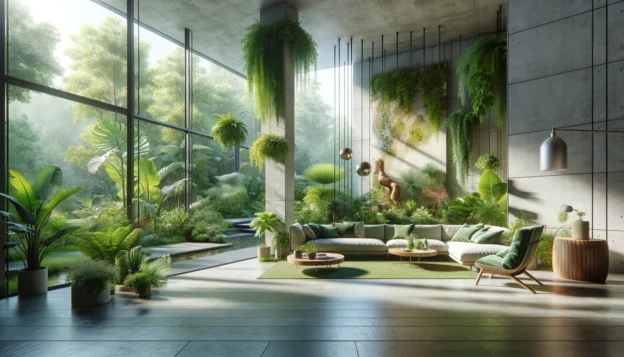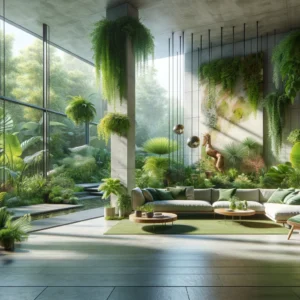In the contemporary discourse on environmental sustainability and architectural innovation, biophilic design has emerged as a beacon of holistic integration, reconnecting human spaces with the natural world.
This philosophy, rooted in the essence of bringing outdoor elements indoors, not only revitalises our physical environments but also echoes a profound parallel with the principles of neurodiversity in the workplace.
Just as maintaining the vitality of green elements within biophilic designs poses an ongoing challenge, so does nurturing the diverse spectrum of human minds in our professional environments. Nature’s inherent dynamism — with seasons changing, plants growing, and ecosystems evolving — mirrors the fluidity and expansiveness of neurodivergent individuals. Both realms require a departure from static norms in order to truly flourish.
The crux of biophilic design lies in its adaptability, creating spaces that evolve with the natural rhythms of growth and decay. This adaptability is equally critical when fostering an inclusive workplace for neurodivergent individuals. Static architectural and organisational norms fall short in accommodating the rich array of cognitive Operating Systems. Like the ecosystems embraced by biophilic design, neurodiverse teams thrive in environments that are flexible, responsive, and open to evolution.
In densely populated urban settings, where space is at a premium, biophilic design innovates to introduce natural elements without sacrificing valuable real estate. This mirrors the challenge of embedding neurodiversity support and initiatives within existing organisational structures. Innovations such as vertical gardens and rooftop green spaces parallel strategies like flexible work arrangements, support without the requirement of disclosure, and tailored situational solutions.
The movement towards environmental consciousness and the incorporation of biophilic elements is not just about reshaping our physical surroundings but about reevaluating our relationship with the natural world and its impact on productivity, efficiency and wellbeing. Similarly, advancing neurodiversity support and awareness in the workplace is not solely about making accommodations for a disability, but about fundamentally rethinking our perceptions of the value in natural diversity of thought.
As we navigate these challenges, they transform from obstacles into stepping stones toward a more inclusive, dynamic, and sustainable future.
The journey involves reshaping not only our physical environments but also our cultural landscapes, one green space and one neurodivergent talent at a time.
In conclusion, the principles of biophilic design and neurodiversity are intrinsically linked by the shared values of growth, adaptability, and sustainability.
By embracing these principles, we cultivate spaces — both environmental and organisational — that thrive on diversity and innovation, fostering a healthier planet and a more inclusive society.



